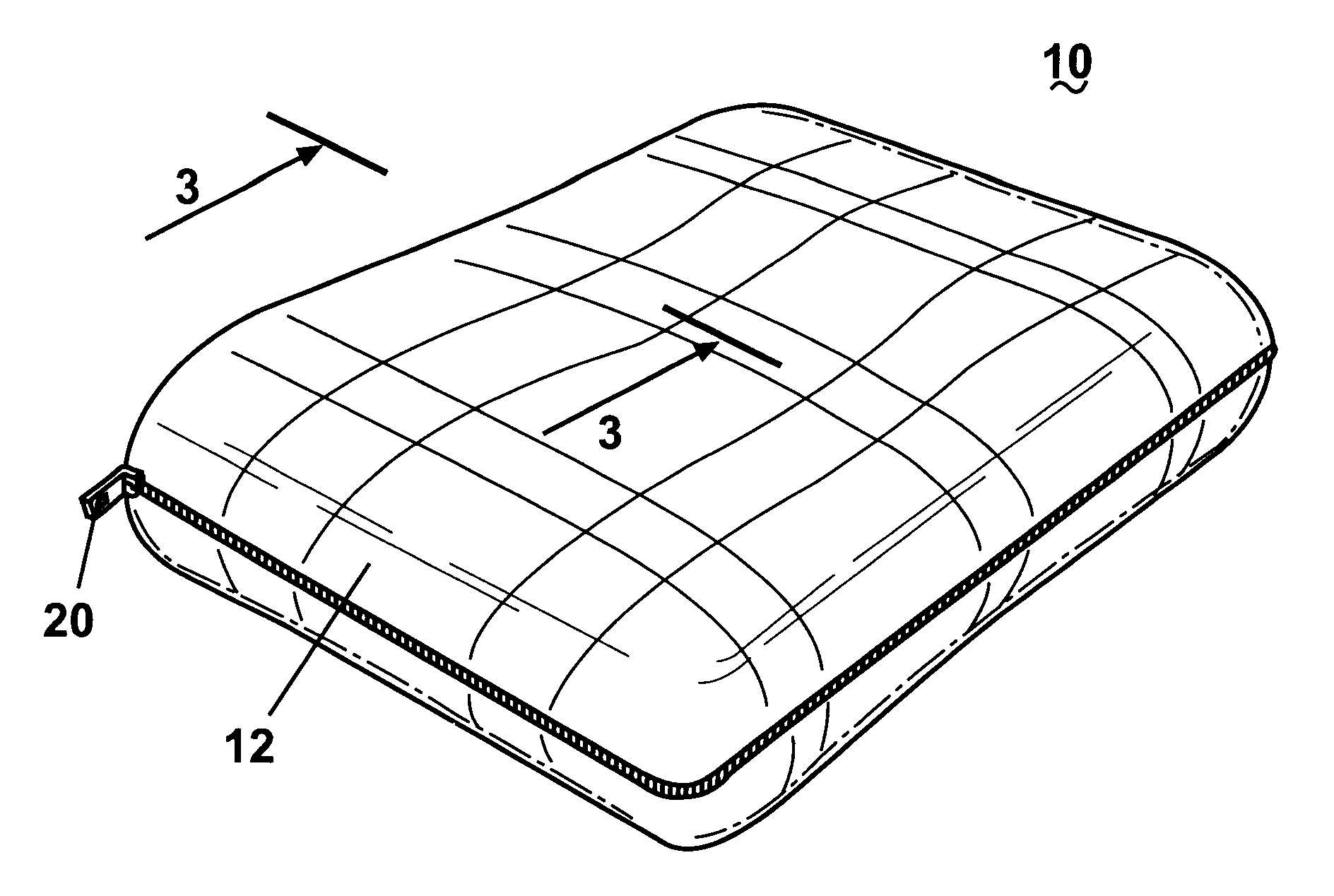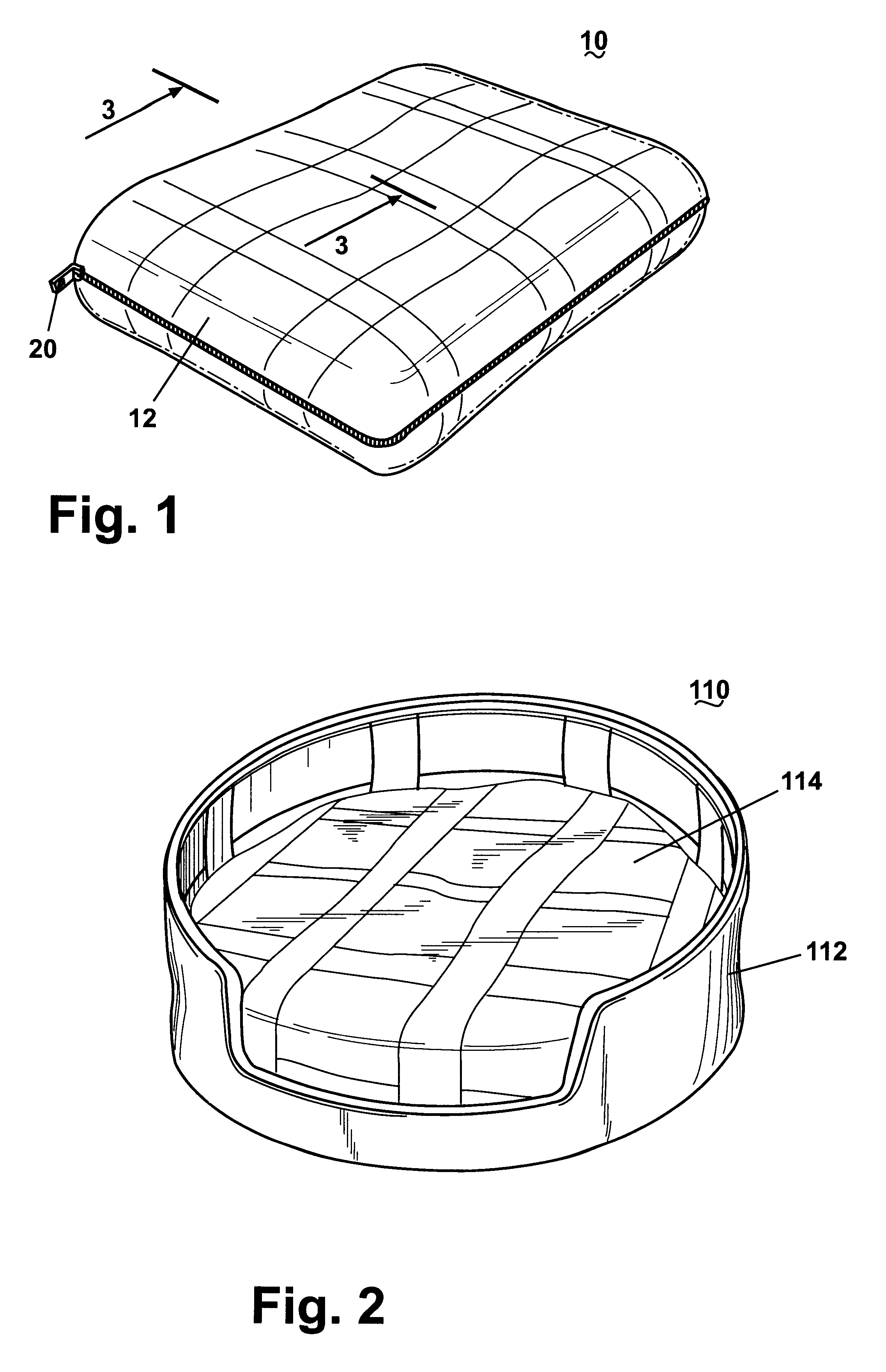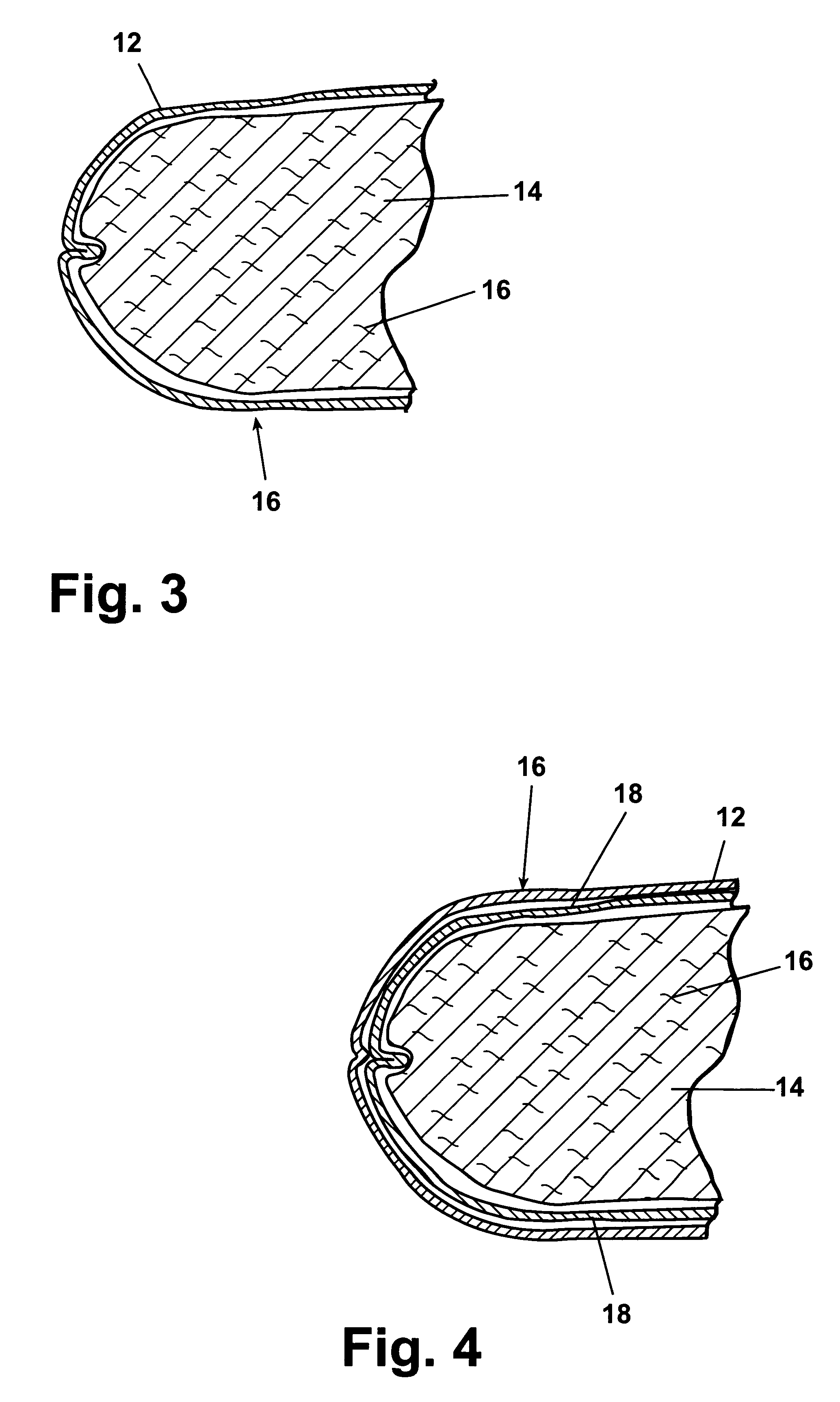Bedding articles possessing microbe-inhibiting properties
a technology of microorganisms and bedding articles, which is applied in the field of bedding articles with microorganism-inhibiting properties, can solve the problems of pet owners, pets using such articles, and pets being exposed to a significant health hazard, and no bedding articles containing microorganisms have been disclosed
- Summary
- Abstract
- Description
- Claims
- Application Information
AI Technical Summary
Problems solved by technology
Method used
Image
Examples
example no.2
EXAMPLE NO. 2
A 0.12 m.sup.3 cover structure is to be filled with a fiber blend; and the total blend is to comprise 1.2% of the total containment volume. The average blend concentration of the microbe-inhibiting agent is to be greater than 0.29%. An acrylic fiber (density=1.18 gm / cm.sup.3) in which was incorporated 0.65% triclosan anti-microbial agent during its manufacture, as well as conventional nylon fiber (density=1.14 gm / cm.sup.3) are used.
Using the design equations in Section V of the Description, it is necessary to have the microbe-inhibiting acrylic fiber occupy a volume fraction of the containment structure equal to about 0.54%, and to have the conventional nylon fiber occupy a volume fraction equal to about 0.66%. 765 gm of the microbe-inhibiting acrylic triacetate fiber (with a denier of 3.5 and cut to a length of about 1.5") was therefore blended with 903 gm of conventional nylon fiber (with a denier of 5.5) and cut to a length of about 1.5"). In this case, the average b...
example no.3
EXAMPLE NO. 3
A 50,000 cm.sup.3 cover structure is to be filled with a fiber blend; and the total blend is to comprise 1.8% of the total containment volume. The average blend concentration of the microbe-inhibiting agent is to be 0.12%. A polypropylene fiber (density=0.93 gm / cm.sup.3) in which was incorporated 0.2% Tri-n-butyltin maleate (Ultra Fresh DM-50) anti-microbial agent during its manufacture, as well as regular polyester fiber (density=1.39 gm / cm.sup.3) are used.
Using the design equations in Section V of the Description, it is necessary to have the microbe-inhibiting polypropylene fiber occupy a volume fraction of the containment structure equal to about 1.08%, and to have the conventional polyester fiber occupy a volume fraction equal to about 0.72%. 502 gm of the microbe-inhibiting fiber (with a denier of 4 and cut to a length of about 2") was therefore blended with 500 gm of conventional polyester (with a denier of 5 and cut to a length of about 1.5").
example no.4
EXAMPLE NO. 4
The present example comprises the manufacture of a rectangular bed for a dog. The bed possesses a fleece top, a poly-cotton print bottom, and a zipper (on the short side). The top material is comprised of synthetic lambswool, also known as fleece. This material has two sides: a fleece side, which simulates the fleece of a lamb; and a backing or back-side. The synthetic lambswool used has a weight of 17.5 oz / linear yard and is obtained on 60"-wide rolls.
A roll of the synthetic lambswool is laid out flat across a spreading table such that the fleece side is facing the table, and the back-side is marked to indicate the area to be cut (27".times.36" rectangles, in this case). The synthetic lambswool is then cut using an Eastman rolling knife. The poly-cotton print material used for the bottom has a weight of 8 oz. / linear yard and is obtained on 60"-wide rolls. A roll of the poly-cotton print material is laid out flat across a spreading table such that the print side is faci...
PUM
 Login to View More
Login to View More Abstract
Description
Claims
Application Information
 Login to View More
Login to View More - R&D
- Intellectual Property
- Life Sciences
- Materials
- Tech Scout
- Unparalleled Data Quality
- Higher Quality Content
- 60% Fewer Hallucinations
Browse by: Latest US Patents, China's latest patents, Technical Efficacy Thesaurus, Application Domain, Technology Topic, Popular Technical Reports.
© 2025 PatSnap. All rights reserved.Legal|Privacy policy|Modern Slavery Act Transparency Statement|Sitemap|About US| Contact US: help@patsnap.com



